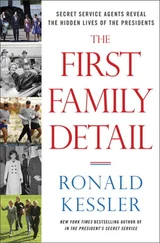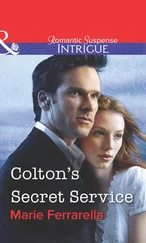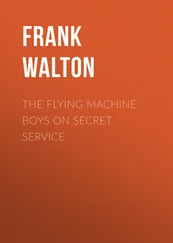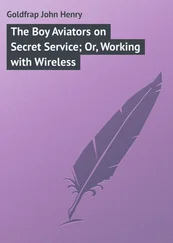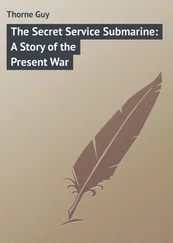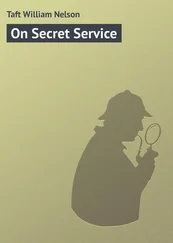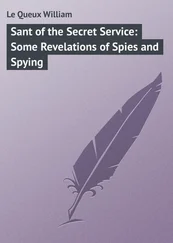“We have half the number of agents we need, but requests for more agents have fallen on deaf ears at headquarters,” an agent says. “Headquarters’ mentality has always been, ‘You can complete the mission with what you have. You’re a U.S.S.S. agent.’”
The inauguration of the first African American president and the unprecedented crowd size made the event a high-value target. Once Obama became president, the Secret Service experienced a 400 percent increase in the number of threats against the president, in comparision with President Bush. While most of the threats were not credible, each had to be checked out and adjudicated. Because the Secret Service thinks calling attention to threats gives people ideas and generates more threats, the agency never publicly characterizes their frequency.
Since the inauguration was a special national security event, the Secret Service was the lead agency in charge of security. The security precautions were unprecedented. Under the Secret Service’s plan, a large section of downtown Washington was cordoned off. Personal vehicles were banned from Potomac River bridge crossings to D.C. Interstates 395 and 66 leading into Washington were closed to personal traffic as well.
As with previous inaugurations, the Secret Service arranged to block with concrete barriers or police cars every street in Washington leading to the motorcade route. Since the 9/11 attack, crowds must now pass through magnetometers before entering the area along the motorcade route. Coolers, backpacks, and packages were banned.
Secret Service agents and military explosives experts inspected manholes and underground tunnels along the motorcade route. Manhole covers were spot-welded shut. Mailboxes and trash cans were removed from the street. If an item could not be removed, it was inspected and taped shut. If anyone tampered with it, the special tape—which varies in color with the event—would deteriorate.
Bomb-sniffing dogs inspected buildings, garages, and delivery trucks. Employees in offices along the route and hotel guests were often checked for criminal records. Agents made sure they had access to every office and hotel room with master keys kept by building or hotel managers. They taped shut utility rooms or electrical circuit boards. They stationed agents or police officers on top of buildings.
More than a dozen countersniper teams were deployed at the most vulnerable points along the parade route. Helicopters hovered overhead, other aircraft were kept away, and high-resolution surveillance cameras scanned the crowds. A $350,000 loudspeaker system using sonar technology was installed to give instructions in the event of an emergency.
“Every window must be closed when the motorcade passes,” a supervisory agent says. “We have spotters looking at them with binoculars. For the most part they comply. If they don’t, we have master keys to all those doors. We ask them why they are there and opening the windows.”
If agents encountered a problem, they called for an ID team. Named for the Intelligence Division, the ID team travels with the president and vice president. It is usually composed of a Secret Service agent and a local police officer. At the inauguration, most of the ID teams consisted of Secret Service agents. Several times, the teams interviewed suspicious individuals.
In all, the Secret Service coordinated the work of at least forty thousand officers and agents from ninety-four federal and local law enforcement, military, and security agencies. Police departments from across the country contributed officers, many wearing plain clothes. The total force was double that of Bush’s second inauguration.
Just past noon on January 20, Obama placed his left hand on the Lincoln Bible, a velvet-bound volume purchased by a Supreme Court clerk for the Great Emancipator’s swearing in on March 4, 1861. Obama raised his right hand and took the thirty-five-word oath of office administered by Chief Justice John Roberts.
Twice, Obama and his wife, Michelle, left their limousine to walk along Pennsylvania Avenue and wave to the crowds. Jimmy Carter was the first president to do this, spontaneously leaving his limousine without clearing it with the Secret Service. Since then, the Secret Service has scripted where the president should walk, providing extra security along the way.
Intelligence officials picked up information that people associated with a Somalia-based group, al-Shabaab, might try to travel to the United States with plans to disrupt the inauguration. The information had limited specificity and uncertain credibility.
In the end, nearly two million people packed the outside of the Capitol, the parade route, and the National Mall. The inauguration went off without a hitch. Yet even as Obama took the oath of office, the Secret Service took risks by cutting corners. Contributors who raised three hundred thousand dollars or more for the inauguration were never asked to show identification to pick up tickets, including VIP passes allowing them and their guests to meet privately with him. Others who were screened before sitting in a ticketed area near Obama during his swearing-in mingled with crowds that were not screened. They were never again checked for firearms or explosives.
More than a hundred VIPs were told to gather for a security screening outside the Renaissance Hotel before boarding “secure” buses that would take them to Obama’s podium at the Capitol. But after passing through the magnetometers, they were told to walk on a public sidewalk and find their way to buses waiting in a convention center parking lot. They were not screened again or asked for identification.
One donor who handled contributions for the inauguration told The Washington Post that he was shocked at the difference between Secret Service security during Bill Clinton’s inaugurations and Obama’s.
“The lack of security was absurd,” he said.
As usual, the Secret Service claimed some security measures are not visible.
“We take a layered approach to security and don’t rely on any one countermeasure to ensure that a site is safe,” spokesman Ed Donovan said.
Yet for all the mumbo jumbo about layered security, the fact is that by failing to properly screen spectators, the Secret Service exposed the new president to possible danger.
28

Grenade
IN HIS OFFICE on the ninth floor of Secret Service headquarters, Nicholas Trotta, who heads the Office of Protective Operations, is talking about lessons learned from previous assassinations and assassination attempts. After the attempt on President Reagan’s life, “We expanded our use of the magnetometers.” Now, he says, “Everyone goes through the magnetometer.”
Often, just seeing a magnetometer in use is a deterrent, Trotta notes. He recalls working an outdoor event in Denver with President George H. W. Bush. A deranged woman with a handgun in her backpack arrived early at the site, thinking she would get close to the president.
“She sees one of the limos go into a tent,” Trotta says. Because onlookers were being screened with magnetometers, “She can’t get in. So she waits.” She thought she would then shoot the president as he entered his limousine, but she got distracted by people next to her. As agents were flying back to Washington, they learned that the woman had been committed to a mental hospital. She revealed her aborted plan to family members.
“There’s been so many like that—ones we don’t know about because they were not successful,” Trotta says. “How many [assassins] have been stopped or have seen a police officer, have seen a magnetometer? I don’t know how many times I’ve been briefed where people, as they are getting in line, see the magnetometer, and they turn the other way. That’s a trigger for us. Teams will go and interview, and all of a sudden a person has weapons on them.”
Читать дальше


